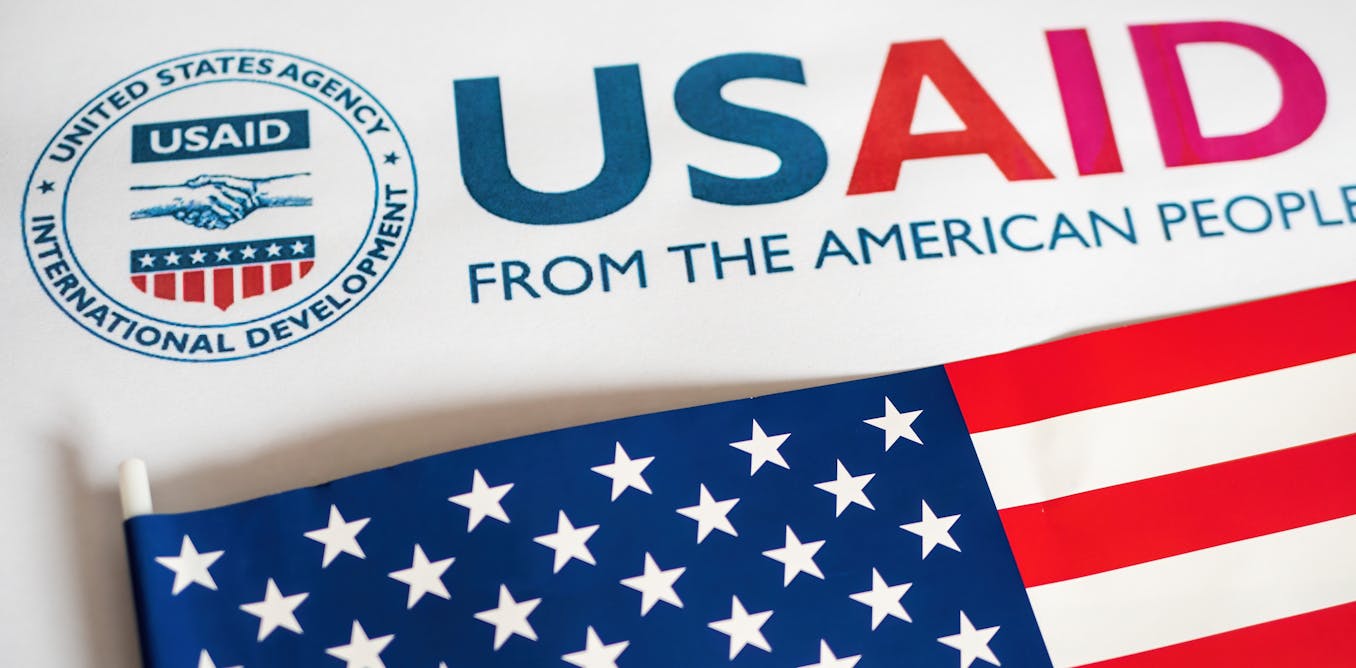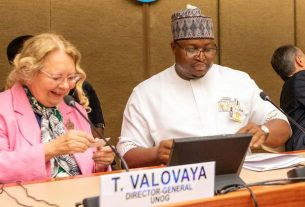[ad_1]
The Trump administration’s decision to suspend USAID workers for 90 days and pause most of its international aid work has rocked the foundations of the global aid system. The move, which has sparked outrage in the international community, threatens to destabilise vulnerable regions and halt decades of progress in economic development, health, and human rights.
Since its inception in 1961, USAID has been the cornerstone of US humanitarian assistance. It operates in around 130 countries, provides essential relief in humanitarian crises and health emergencies, and supports economic development in the world’s most vulnerable regions.
Its possible shutdown raises a crucial question: who will fill the void left by one of the world’s largest international aid agencies?
The impact of USAID cuts
If USAID closes down for good, it will mean an drop of around $40 billion in international aid per year, which will have dire consequences in certain key areas:
-
Humanitarian crises and food security: in countries such as Yemen, South Sudan and Syria, where millions of people depend on international aid, reduced funding threatens food security, disaster relief and health interventions. International aid agencies have warned that reduced funding will lead to the collapse of many assistance programmes in war zones.
-
Public health and disease prevention: essential programmes such as those covering HIV/AIDS prevention and treatment, vaccination, and maternal and child care will be slashed. Suspending programmes like the President’s Emergency Plan for AIDS Relief (PEPFAR) will leave 21 million people without treatment, reversing many of the gains that have been made.
Pio Smith, UNFPA’s Asia-Pacific regional director, has warned that in Afghanistan alone, the absence of US support could lead to 1,200 maternal deaths and 109,000 additional unwanted pregnancies between 2025 and 2028. In regions such as sub-Saharan Africa and Southeast Asia, the withdrawal of funds will weaken efforts to contain infectious diseases, leaving millions of people without access to essential medical services.
-
Economic development and employment: Thousands of small businesses and communities will lose access to microcredit and financing. This will reduce job opportunities and slow economic growth in low-income countries. Without USAID support, many vulnerable communities will lose opportunities for employment and economic growth. USAID also employs over 10,000 people around the world, who now face an uncertain future.
-
Democracy and human rights: USAID’s withdrawal will weaken struggles for democracy and respect for human rights in countries where civil society faces increasing threats. Education and gender equality programmes have been hit hard, with USAID’s suspension cutting projects designed to improve access to education for girls, and people in marginalised communities.
According to UN data, the US government funded about 47% of the world’s humanitarian initiatives in 2024. The suspension of USAID leaves a huge gap in humanitarian aid.
The international community has reacted with alarm to the new US administration’s announcement. Abby Maxman, CEO and president of Oxfam America, has described the crisis as “a callous, destructive political power play that would have deadly consequences for millions of people living in dire humanitarian emergencies and extreme poverty”.
How effective is USAID?
It should be noted that the US international aid agency has not always adhered to the criteria set out in the 2005 Paris Declaration on Aid Effectiveness. These are divided into the following five commitments:
-
Ownership: For truly sustainable development, recipient countries need to design their own development policies and strategies with the support of donor countries. Recipients must also lead and manage the work on the ground.
-
Alignment: Donors need to firmly align their aid with the priorities outlined in national development strategies. They must use local procedures and institutions to manage their aid and build sustainable structures in recipient countries.
-
Harmonisation: Donors need to coordinate their development work in order to avoid duplicating efforts, or causing high costs for poorer countries.
-
Managing for results: All parties need to focus on the outcome, and on developing systems and tools to measure an aid programme’s impact.
-
Mutual accountability: Donors and recipients must be accountable to each other for how aid is used. This should also be extended to their own citizens and parliaments.
Generally speaking, USAID has worked as an instrument that serves US strategic interests. However, given the sheer volume of funds it handles, it will be difficult to find donors to take its place.
Moreover, USAID’s withdrawal reconfigures the geopolitical map of international aid. With the US out, other global actors could take its place.
China or Europe may fill the aid vacuum
The EU could be key to mitigating the impact of USAID’s shutdown. However, in 2021 the Commission switched from a more traditional model of development aid to one of global partnerships.
Through its Global Gateway Initiative, it has pledged investments of €300 billion in sectors such as health, infrastructure and sustainability between 2021 and 2027. The EU now has the geostrategic opportunity to prove itself as a reliable alternative at a critical moment.
Read more:
US-China tensions are an opportunity – the EU could become the world’s third great power
China has emerged in recent decades as another rising alternative in international aid. Through its Belt and Road initiative, it has significantly increased its investment and presence in Africa and Latin America, though in some cases, its excessive funding has been criticised as “debt-trap diplomacy”.
The withdrawal of USAID presents China with an opportunity to further expand its soft power in emerging and low-income regions by providing funding and assistance to countries that were previously dependent on the US.
Development banks (entities such as the World Bank, the Inter-American Development Bank and the Development Bank of Latin America and the Caribbean) may also take a more active role in filling the vacuum by channelling funding to critical projects in health, education and infrastructure. It remains to be seen, however, whether US participation in some of these organisations will be affected, and how much influence it will retain over them.
The private sector can also play a key role in mitigating the crisis through expanded funding and philanthropic endeavours.
The new panorama for international aid
Beyond the debate over how effective foreign aid is, USAID’s withdrawal reflects significant changes in global politics. The US appears to be turning its back on its legacy of leadership in development and humanitarian assistance, and this new reality demands a coordinated response. If the international community does not act quickly, the setbacks in health, education, food security and human rights in developing countries will be devastating.
The question is no longer just who will fill the vacuum left by USAID, but whether the world is ready to collectively take responsibility for global aid. In a context of rising nationalism and weakening multilateralism, the values that underpin international cooperation are at risk, as is the future of millions of people.
[ad_2]
Source link



